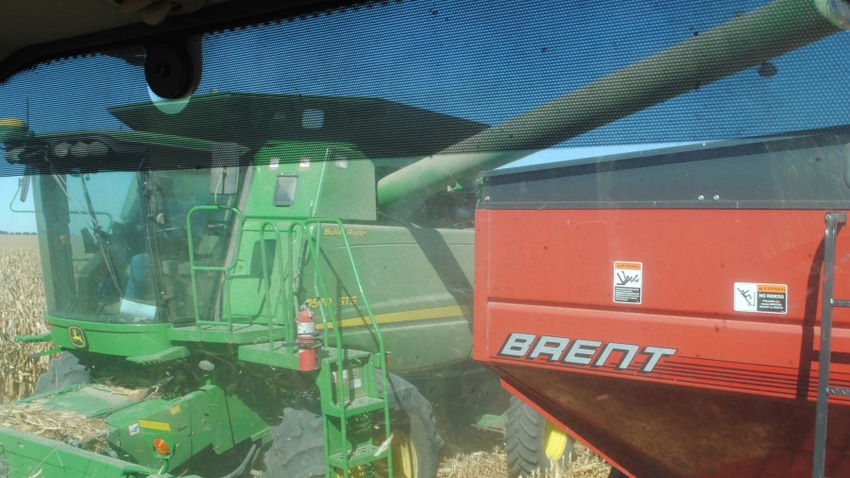
Getting meals ready or finding something to eat during the busy harvest season can be stressful. That’s why Hannah Guenther, Nebraska Extension food, nutrition and health educator, came up with culinary hacks to make life easier in eating healthy during busy farming seasons.
At a recent University of Nebraska Women in Agriculture and Center for Agricultural Profitability webinar, Guenther shared five quick hacks that are easy to implement:
1. Don’t let choosy eaters get you stressed. “It can be overwhelming to be dealing with choosy eaters in your family,” Guenther says. “Don’t think about it as taxing or overwhelming. Think of it as a privilege and find what works for you. Don’t fight about it. Get them involved in the process to limit the stress around feeding others.”
2. Get heavy-handed with seasonings. “Use herbs and spices,” Guenther says. “Paprika, Italian garlic powder, onion powder, roasting vegetable seasonings, anything that works for you.” Herbs and spices are a great way to add flavor without added sodium, fat or calories.
3. Balance salt, fat, heat and acid. It is the balance in these four flavors that makes things delicious, Guenther explains. “If something is not right, add more salt or add more acid like lemon juice or vinegar,” she suggests. “Add more to see if it helps.” You may have to repeat this process a few times in order to get it to the place where you want it.
4. Use prepared sauces. Any prepared sauce, like marinara or pesto can be added to flavor food with no extra work. You can also use grab-and-go seasonings, Guenther says. Pesto, for example, is amazing on roasted potatoes, roasted chicken, added to sandwiches or wraps, or with pasta.
5. Learn easy vegetable prep. “If you don’t know how to cut or prepare a vegetable, use YouTube or some other resource to learn,” Guenther notes. “With kale for instance, you need to remove the fibrous rib before you eat it, otherwise it tastes so unpleasant.” There are little tips with all vegetables that make them taste better, so don’t let not knowing prevent you from using those vegetables, Guenther says.
More ideas
Here are some more suggestions Guenther offered during the webinar:
Meals to remember worksheet. Guenther suggests developing a “meals to remember” worksheet. “This is a helpful tool to take the brainwork out of planning meals for the family during the busy season,” she says. “Choose meals that you know your family loves and you usually have ingredients for on hand. It is just a resource for simply planning meals for you and your family.”
Look first in your refrigerator to see what you have on hand. Check the freezer and pantry before planning the meals, she adds.
“Start simple with three planned meals per week,” Guenther says. “You might change it up and have a worksheet for harvest, one for planting season, maybe one for calving, or for softball and baseball season.”
Pick three selections from your list, and accept that once in a while, frozen pizza and bagged salad is OK. “It takes the stress out of going to the grocery store, and it is totally adaptable to you and your family,” Guenther explains.
Improve food environment. “Make the healthy food choice the easy choice,” Guenther says. “Rearrange your kitchen and your refrigerator, so when you stock your freezer and your pantry, keep healthy food options up front and snack foods toward the back.”
Cut and prepare fruits and vegetables ahead of time to make them easier to grab and go. Eat at the table without the cellphone and TV as much as possible, she suggests. Keep a lot of protein options in the pantry, including almonds, other nuts, canned chicken and tuna.
“These can often save the day,” Guenther says. “Beans are great to have on hand. Organize your pantry so that everyone has to go to another cabinet to get snack foods. It’s amazing how organizing so they have to take another step for something that is less healthy will make the healthy choice easier.”
Take stress out of thawing. Having frozen meat thawed out ahead of time is often a barrier to preparing a good meal. “There are three safe ways to thaw protein, including in the refrigerator, under cold water changing the water every hour, and in the microwave,” she explains. “The game changer for me is a long, narrow thawing basket in the refrigerator. I have one for eggs and one for proteins. If it is empty, I put something to thaw in there, and it helps me get a dinner ready in a moment’s notice.”
Be sure to have a designated thawing area in the fridge, she adds. You should always thaw in a container, and the container can be something simple such as an ice cream bucket.
View the entire webinar at cap.unl.edu.
About the Author(s)
You May Also Like






